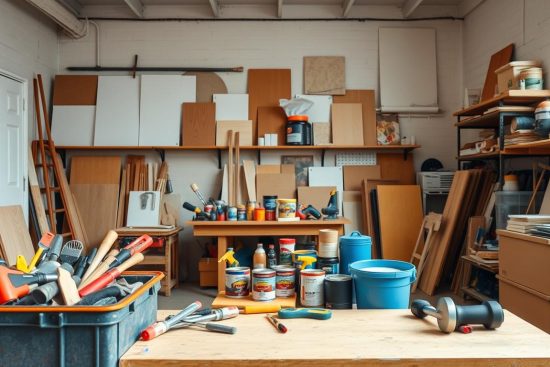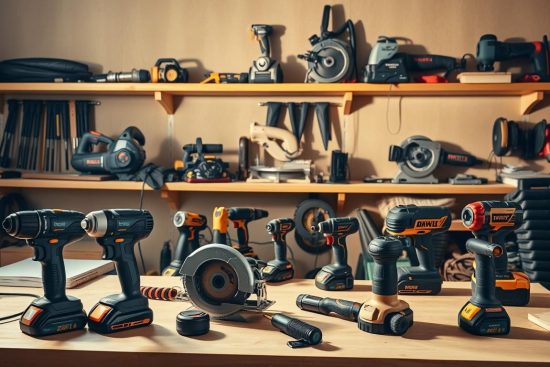Your home is more than just a building—it’s where memories are made and independence thrives. For many older adults, staying in a familiar environment while aging comfortably is a top priority. In fact, research shows 77% of people over 50 plan to stay in their current residence long-term. With thoughtful updates, your space can evolve to support safety, accessibility, and confidence for years to come.

Simple changes like grab bars or better lighting can make daily living easier. Larger projects, such as wheelchair-friendly doorways or step-free showers, offer long-term solutions. These upgrades aren’t just practical—they help reduce accidents and future healthcare costs, according to studies.
This guide will walk you through key modifications, from budget-friendly tweaks to full-scale remodels. You’ll learn how to create a home that adapts to your needs while preserving its warmth and character. Let’s explore how to design spaces that empower older adults to live life on their terms.
Key Takeaways
- 77% of adults over 50 prefer to stay in their current homes as they age.
- Home updates improve safety, accessibility, and independence.
- Modifications range from simple fixes to comprehensive remodels.
- Smart renovations may lower long-term healthcare expenses.
- This article covers practical solutions for every budget and need.
Understanding the Importance of Aging-in-Place
Creating a living space that evolves with your needs isn’t just practical—it’s a powerful way to maintain independence. Let’s explore why adapting existing homes matters for long-term well-being.
What Does Aging-in-Place Mean?
Aging-in-place means modifying your residence to safely accommodate changing physical needs. This approach lets people stay connected to their routines, neighbors, and memories. According to USC Gerontology studies, these strategies for independent living reduce hospital visits by 32% compared to relocation scenarios.
“Homes that adapt with residents foster both physical safety and emotional security.”
The Power of Familiar Environments
Staying in known surroundings helps older adults navigate spaces confidently. Research shows:
| Factor | Relocation Stress | Staying Put Benefits |
|---|---|---|
| Emotional Health | Increased anxiety | 37% lower depression rates |
| Physical Safety | Higher fall risk | Familiar layouts prevent accidents |
| Social Connections | Isolation concerns | Strong neighborhood bonds |
Neighborhood familiarity also makes accessing health services and community programs easier. Local grocery stores, pharmacies, and senior centers become trusted partners in daily life.
Simple modifications like widened doorways or non-slip flooring preserve independence while maintaining personal style. These changes help create spaces where memories and mobility coexist comfortably.
Key Home Modifications for Safety and Accessibility
Smart updates to high-traffic areas prevent accidents while maintaining comfort. Research from AARP shows 60% of household injuries occur in bathrooms and kitchens. Strategic changes here boost confidence for daily tasks.
Bathroom and Kitchen Renovation Essentials
Start with shower upgrades. Walk-in models eliminate dangerous stepping motions. Pair them with textured flooring – studies show non-slip surfaces reduce falls by 71%.
Install grab bars near toilets and tubs. The CDC recommends vertical and horizontal placements for optimal support. Choose ADA-compliant models that blend with your decor.
“Properly placed safety features reduce bathroom injuries by 80% in modified homes.”
Optimizing Staircases and Entryways for Mobility
Stairs become safer with these fixes:
| Modification | Benefit | Cost Range |
|---|---|---|
| Stair lifts | Eliminate climbing strain | $2,000-$5,000 |
| Contrasting tread edges | Improve depth perception | $150-$300 |
| Double handrails | 360° support system | $800-$1,200 |
Entry ramps should have 1:12 slope ratios for smooth mobility. Add motion-activated lights to illuminate pathways automatically. These changes help maintain independence during all weather conditions.
For existing stairs, secure loose carpets immediately. Consider replacing worn steps with composite materials that resist slipping. Even small tweaks create big differences in daily mobility.
Practical Aging-in-Place Strategies
Practical solutions blend technology and comfort for safer living. Simple upgrades can transform your space into a secure, adaptable environment that grows with you. Let’s explore tools and design choices that prioritize independence without sacrificing style.

Integrating Medical Alert Systems and Safety Features
Modern medical alert systems offer 24/7 emergency support. Look for waterproof wearables with fall detection and GPS tracking. Many services now integrate with smart home devices, letting you call for help using voice commands.
Installation is often handled by certified technicians. Some companies provide free equipment with monthly monitoring plans starting at $25. These modifications create instant access to assistance, whether you’re gardening or showering.
Adopting Adjustable Furniture and Home Fixtures
Height-adjustable desks and lift chairs make daily tasks easier. Look for:
| Item | Key Feature | Benefit |
|---|---|---|
| Riser recliners | Motorized lift | Eases standing |
| Kitchen carts | Locking wheels | Moves supplies safely |
| Bed frames | Remote control | Adjusts sleeping position |
Local services can customize these pieces to fit your space. Many retailers offer free in-home consultations to ensure proper fit and comfort.
For budget-friendly modifications, add lever-style door handles and pull-out shelves. These changes require minimal effort but significantly improve access to everyday items. Partner with occupational therapists or senior-focused contractors for personalized support during renovations.
Community and Financial Benefits of Aging-in-Place
Staying in your neighborhood offers more than comfort—it builds lasting bonds and financial stability. Let’s explore how smart choices today create stronger tomorrows for residents and their surroundings.

Neighborhood Roots Grow Stronger
Long-term residents often form deep ties with local businesses and neighbors. A 2023 AARP survey found 68% of adults over 65 feel safer in familiar communities. These connections provide:
- Shared childcare or pet care with nearby families
- Meal delivery from trusted restaurants during illnesses
- Regular check-ins from mail carriers or librarians
Portland’s “Village Movement” shows how communities thrive when neighbors support each other. Over 300 members share resources like transportation and home repairs through this grassroots network.
Smart Spending for Lasting Comfort
Upfront investments in homes often save money over time. Compare common expenses:
| Modification | Average Cost | Potential Savings |
|---|---|---|
| Walk-in shower | $4,500 | Reduces slip-related injuries by 65% |
| Smart lighting | $200 | Cuts fall risk by 42% at night |
| Widened doorways | $1,100 | Delays assisted living needs by 3-5 years |
HUD reports show modifying existing homes costs 80% less than senior living facilities. Simple fixes like lever handles ($15 each) or non-slip mats ($8) make big impacts. As noted in USC research, these changes help adults maintain independence while easing family caregivers’ burdens.
Personalizing Home Renovations for Independent Living
Jack Miller’s San Francisco kitchen tells a story of smart adaptation. After arthritis made reaching upper cabinets difficult, he worked with design professionals to create pull-down shelves – a simple change that restored his cooking routine. This approach transforms houses into personalized sanctuaries that respect individual experiences.
Room-by-Room Customization Ideas
Tailor each space to your needs:
- Kitchens: Install drawer microwaves at waist height
- Bedrooms: Use voice-controlled blinds for easy light adjustment
- Living rooms: Choose firm-sofa cushions with hidden lift mechanisms
These adjustments address specific challenges while maintaining aesthetic appeal. A 2023 Houzz survey found 83% of age-focused renovations improved daily experiences.
Designing Around Your Unique Needs
Your lifestyle dictates the best solutions. A gardening enthusiast might prioritize raised flower beds, while a book lover could benefit from rotating library shelves. Occupational therapist Linda Carter notes:
“Modifications should feel intuitive – like your home’s always worked this way.”
Collaborate with certified professionals to balance safety and style. Many contractors now offer virtual reality tools to preview changes before installation. This process ensures every update aligns with your needs and age-related considerations.
Expert Advice and Resources for Home Modifications
Quality guidance transforms overwhelming projects into manageable steps. Professionals across fields share proven strategies to create safer, smarter living spaces. Let’s explore how their expertise simplifies decision-making.
Insights from Medical and Design Professionals
Geriatric nurse practitioner Dr. Ellen Torres emphasizes:
“Prioritize changes that address both current needs and future risks. A grab bar today might prevent a hip fracture tomorrow.”
Recent research reveals three high-impact updates: motion-sensor night lights (reduces falls by 48%), touchless faucets (limits bending), and voice-controlled thermostats. Occupational therapists often recommend starting with these affordable upgrades.
Navigating Tools, Services, and Community Support
Trusted online resources like the National Council on Aging offer checklists for room-by-room safety audits. Local community programs frequently provide:
- Free virtual consultations with accessibility experts
- Rebates for wheelchair ramp installations
- Loaner equipment libraries for trial periods
Well-structured content helps people compare products and contractors. The Home Modification app aggregates reviews from 12,000 users, making it easier to choose reliable services.
For ongoing help, connect with Area Agencies on Aging. These groups link homeowners to vetted professionals and funding opportunities. With the right resources, creating a secure home becomes a collaborative journey rather than a solo challenge.
Conclusion
Transforming your home today lays the foundation for safer, more comfortable living tomorrow. Thoughtful updates – from bathroom grab bars to slip-resistant flooring – help maintain independence while adapting to changing needs. These changes create spaces that work for you, not against you.
Even small modifications make a difference. A walk-in shower or lever-handled faucet reduces daily strain. Wider doorways and smart lighting systems ensure easy navigation for years to come. Research shows homes with these features help residents stay confident and injury-free longer.
Start by evaluating high-use areas like kitchens and bathrooms. Use the expert strategies shared here to prioritize updates that match your lifestyle. Many solutions blend seamlessly with existing decor, proving safety and style coexist beautifully.
Your journey begins with one step. Schedule a home safety audit or consult local contractors specializing in accessible design. With proper planning, your residence can evolve alongside your needs – protecting both your well-being and cherished memories for years ahead.


